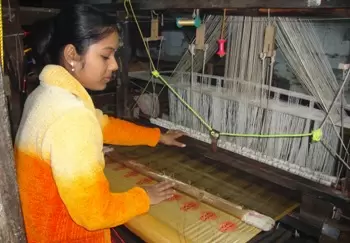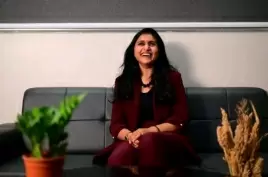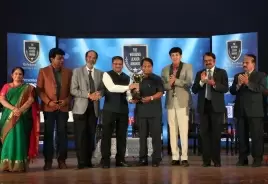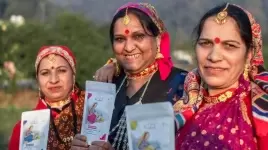The makeover of Assam’s timeless fabric

09-February-2013
Vol 4 | Issue 6
That oft heard line, about not being able to keep up with time, does not apply to Assam’s age-old, indigenous silk fabric. Be it the Pat, Muga or Eri, with age, these famed varieties have gracefully adapted to the changing times.
“If you want to survive, you have to adapt to changing trends,” states Hemkanta Baruah, a shop owner in Guwahati.
 |
|
A young weaver spins the traditional Mekhla Chador in silk (Photo: Azera Parveen RahmanWFS)
|
“Therefore, as people’s tastes change, so have the garments made out of Assam silk. From the traditional mekhla chadors (the traditional attire of Assamese women) and Eri shawls, this fabric has now become the base for exquisite saris, salwars, scarves and dresses, shirts, jackets and much more. We get many customers who want dress materials in Assam silk,” he adds.
Silk production and weaving is an intrinsic part of Assamese culture. Tradition dictated that a girl’s weaving skills were important in order for her to be eligible for marriage. Such was the significance of a woven cloth that a man, before he went to war, wore clothing made of fabric woven by hand overnight.
Sericulture in the northeastern region of the state comprises mainly mulberry (Pat) silk, which is white; the golden Muga, and the warm but coarse Eri. All of India’s Muga silk production and 98 per cent of Eri silk production is done in Assam, giving the state a unique spot in the sericulture map of the country.
Of the three, Muga occupies a special place, and is often called the pride of Assam. This golden yellow silk is produced by a caterpillar known as the Antrherea assama.
As the name indicates, it is only in Assam that Muga is produced. Because of its beautiful golden hue, Muga is perfect for artistic weaving. The continuous silk filaments are mostly used for mekhla chadors, saris and dress material, while the handspun yarn is used for making shawls and home furnishing.
“Muga silk is one of the strongest threads, and so it ages with the owners and sometimes even outlives them,” remarks Suman Das, who owns a boutique in Tezpur, a small town in Assam.
“My mother was gifted a beautiful Muga mekhla chador by my grandaunt during her wedding, which she wore many a time, before folding it away for good. Once, while she was cleaning out her cupboard, I saw it. After all those years, its brilliance was untouched, and I decided to stitch a salwar out of it. Today, whenever I wear that piece, it invites many compliments.”
Eri, often called the poor man’s silk, had a limited use until recently. Earlier, its yarn was coarse – since it was only handspun – and was used to make shawls and jackets. Today, however, the story has changed dramatically.
With the advent of Eri spinning mills, the finer form can now be woven into mekhla chadors, saris and other products. The beauty of this silk is that although it may not have the shine of mulberry, it has anti-fungal properties, is a good insulator, and is a very hardy fabric. Its texture is like cotton, but it is warm like wool.
According to the Central Silk Board, Assam’s overall silk production has risen thanks to robust Eri silk production. As per the 2011-12 figures, silk production in the state stands at 2,109 metric tonnes, next only to Andhra Pradesh (6,019MT) and Karnataka (7,800MT). Of the total production, Muga accounts for 115 metric tonnes and Pat, 18 metric tonnes. Eri rules at 1,976 metric tonnes.
Says Sarat Deori, joint secretary of the Central Silk Board (CSB), Northeast, “There is a lot of scope for product diversification using silk, since it can be blended with others fibres. Eco-friendly silk had a huge international market.”
Keeping that in mind, weavers are also blending different silks into one fabric, like Pat-Muga, and even combining silk with cotton. “Indigenous Assam silk is timeless. Its brilliance cannot be matched, and in today’s times, when people are so eager to re-connect with their roots and love anything ethnic, Muga, Pat and Eri are winners all the way. This is probably why the mekhla chador too has not gone out of fashion. Instead, modern designs and contemporary shades have kept it in sync with changing tastes and times,” opines Manjulika Borah, a young, Guwahati-based Assamese fashion designer.
Agrees Gautam Chandra Das, a resident of Sualkuchi, the silk village of Assam. Das has 10 looms and supplies mekhla chadors to shops in Guwahati, just 35 kilometres away.
Reveals Das, “We cater to the demand of the masses and often shop owners tell us that customers want modern designs. So instead of only traditional motifs, like the hingkhap or jaapi (Assamese hat), we also have the more contemporary geometric designs on mekhla chadors. Sometimes we weave traditional motifs on saris, which is quite popular, as well as on dress material. There is a lot of mix and match.”
During festive times, especially around the harvest celebrations of Bihu, and during winters when marriages take place, the demand for mekhla chadors multiplies. During this time migrant workers from nearby villages also come to Sualkuchi to work as weavers.
While the popularity and demand for the fabric is on the upswing, what does seem to be a problem is the dwindling number of weavers. “Weaving is not given as much importance as it once was. The main reason for this is that it does not pay much,” feels Das. A Sualkuchi weaver can only expect to earn anything between Rs 2,500 and Rs 4,000 a month by working on a traditional loom.
Reminiscing about his own childhood days, he says that he and his siblings were given weaving lessons at home every day after school. “We are a village of weavers, and learning to weave took precedence over everything else. Today as the cost of living is high, it’s a different scenario. Children prefer to take up a job instead of becoming weavers. Hence, the number of weavers is coming down. At one time Sualkuchi had 25,000 weavers, now we are less than 10,000,” he elaborates. Incidentally, most of the weavers are women.
Although a majority of the looms in Sualkuchi are traditional – there are few power looms. “If the number of weavers continues to dip, I guess we will have to rely on power looms. But frankly, the cloth of power looms tears faster. I had tried it once, but it didn’t work for me,” Das adds.
What could rescue the weavers from this dire state is the Chaneki, a device introduced by the Central Silk Board as part of its loom upgradation programme.
This device can maximise the skills of the weaver and increase the productivity of the loom by threading the weft thread bobbins for spot design or motif making. On traditional looms, weavers are required to insert the weft thread manually, which takes time. Also very often the thread snaps, so the process has to be redone.
“Silk and hand-weaving is Assam’s heritage, and every effort must be made to preserve this tradition. Despite all the challenges, I am happy that people, especially youngsters, have not lost their love for silk and are willing to adapt it to changing times,” Das concludes. - Women's Feature Service














